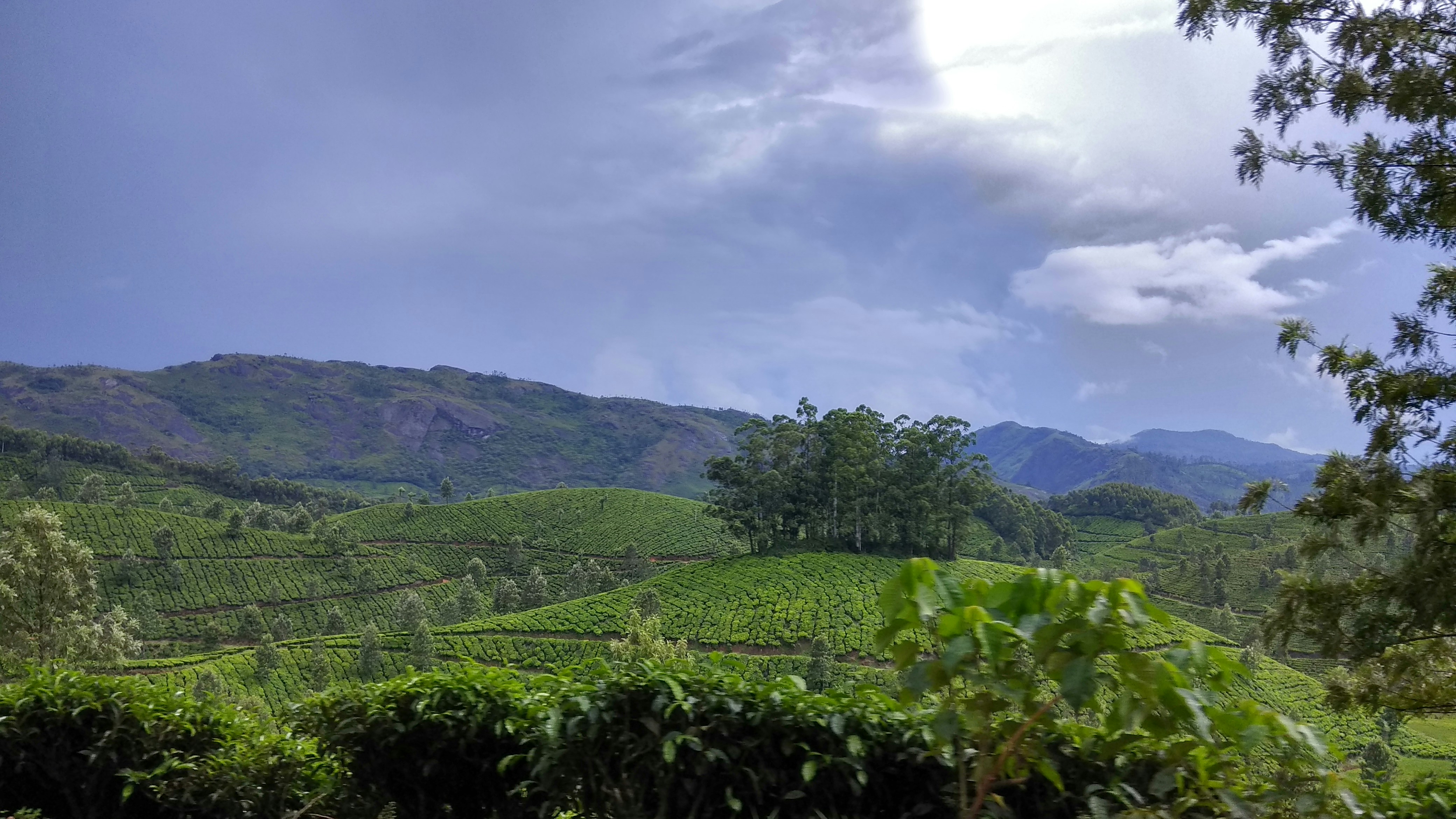Introduction to Sri Lanka’s Climate and Seasons
Sri Lanka, a teardrop-shaped island located off the southern coast of India, is renowned for its tropical climate that showcases an interplay of warmth and rain throughout the year. The country experiences two predominant monsoon seasons, creating a unique weather pattern that significantly impacts travel experiences. Understanding these climatic variations is crucial for any traveler aiming to explore this diverse island.
The first monsoon, known as the Southwest Monsoon, typically occurs from May to September, affecting the western and southern coastal regions. During this period, travelers may encounter heavy rainfall, particularly on the southwestern coast, which can create lush landscapes but may also lead to disruptions in outdoor activities. In contrast, the eastern side of the island enjoys a relatively drier climate, making it a viable alternative for visitors looking to escape the rains.
The second notable monsoon is the Northeast Monsoon, which usually takes place from December to February. This season brings rainfall primarily to the eastern and northern regions, while the west and south generally enjoy sunny days. This difference in weather conditions emphasizes the fact that depending on the time of year, some areas are more hospitable for exploration than others.
Moreover, Sri Lanka’s climate is characterized by warm temperatures year-round, with coastal areas maintaining an average of 28°C to 32°C (82°F to 89°F), while the hill country offers cooler temperatures. This range of climates allows for varied experiences, from relaxing on sun-kissed beaches to trekking through misty mountains. By acquainting oneself with Sri Lanka’s climate and seasonal changes, travelers can better plan their itineraries and choose the best time to visit this remarkable destination.
January to March: Exploring Paradise Under Clear Skies
Visiting Sri Lanka from January to March offers travelers a remarkable experience characterized by pleasant temperatures, low humidity, and minimal rainfall. This three-month window is regarded as one of the best times to explore the island, often attracting both international tourists and locals seeking to revel in the beautiful landscapes and cultural richness that Sri Lanka has to offer.
During these months, temperatures across various regions typically hover between 27°C and 30°C, making it a comfortable climate for outdoor adventures and exploration. The reduced humidity levels enhance the overall experience, allowing visitors to fully appreciate the diverse attractions without discomfort. This enticing weather encourages exploration of both national parks and pristine beaches, as well as historical sites, thereby catering to a range of interests.
For nature enthusiasts, January to March is particularly favorable for visiting renowned national parks such as Yala and Udawalawe. Wildlife enthusiasts can witness a variety of endemic species, including elephants and leopards, amidst verdant landscapes. Additionally, the coastal regions, such as Mirissa and Unawatuna, exhibit calm waters perfect for activities like snorkeling, diving, and whale watching. The sandy beaches are ideal for relaxation and sunbathing, drawing in many to experience the picturesque coastline.
Cultural explorers can take advantage of this period to visit significant historical sites, including the ancient rock fortress of Sigiriya and the sacred city of Kandy. These locations host numerous festivals and rituals, allowing travelers to immerse themselves in the rich cultural tapestry that defines Sri Lanka. Whether indulging in the rich culinary scene or engaging in the vibrant traditions, visitors are ensured an unforgettable experience. Overall, the period from January to March stands out as a sublime time to explore Sri Lanka and savor all that this enchanting destination has to offer.
April: A Transition Month with Unique Cultural Significance
April in Sri Lanka marks a unique transition as the country experiences a mix of weather conditions, shifting from the dry season to the start of the inter-monsoon period. During this month, travelers can expect warm temperatures, however, sporadic rainfall is also common, particularly towards the end of the month. This transitional weather can play a significant role in planning your visit, as it influences outdoor activities and sightseeing opportunities.
One of the standout features of April is the celebration of the Sinhala and Tamil New Year, known locally as “Aluth Avurudhu.” This significant cultural event usually occurs around April 13th to 14th and is steeped in rich traditions that reflect the country’s diverse heritage. The festivities include a variety of customs such as preparing traditional sweets, the lighting of oil lamps, and engaging in communal games. Visitors are not only greeted with vibrant decorations and lively street performances but also have the opportunity to observe traditional rituals firsthand.
To fully experience the Sinhala and Tamil New Year, some of the best places to visit are Colombo, Kandy, and Jaffna, where local communities partake in vibrant celebrations. Public events often feature traditional dance performances, music, and delicious food stalls, offering a glimpse into the local culture. For those keen to embrace the local Easter festivities, participation in family gatherings or visits to temples can provide an enriching experience.
When planning a trip during April, it is advisable to keep an eye on the weather forecasts. While rain can be unpredictable, packing lightweight waterproof clothing and being open to indoor activities can help mitigate the inconvenience of occasional showers. Ultimately, visiting Sri Lanka in April allows travelers to bask in both the beauty of the island’s landscapes and the warmth of its cultural festivities.
May to August: Rainy Season and Low Tourist Crowds
The period between May and August in Sri Lanka marks the arrival of the southwest monsoon, bringing significant rainfall primarily to the southwestern regions of the island. During these months, tourists may observe a transition in the usual travel patterns, as many opt to postpone their trips in light of perceived weather conditions. However, visiting during this time offers unique opportunities that can significantly enhance the travel experience.
One of the most noteworthy advantages of traveling to Sri Lanka during the rainy season is the substantial decrease in tourist crowds. Popular attractions, serene beaches, and lush nature reserves become less congested, allowing for a more intimate exploration of these sites. Visitors can enjoy the natural beauty of Sri Lanka in a quieter atmosphere, which can make for a more enriching experience. Furthermore, lower hotel rates during this off-peak period provide ample opportunities for budget travel. Tourists can take advantage of lower prices for accommodations, tours, and local transportation.
Additionally, while the rain may deter some outdoor activities, it simultaneously opens doors for exclusive experiences. Water-based activities, such as surfing, water sports, and river rafting can often yield spectacular conditions during this period, especially in places like Weligama and Arugam Bay. The lush greenery, rejuvenated by the monsoon rains, offers a vibrant backdrop for photography and nature enthusiasts alike.
Despite occasional heavy downpours, many days remain relatively dry, and planning around these fluctuations can lead to enjoyable experiences exploring Sri Lanka’s diverse landscapes. Therefore, travelers willing to embrace the rainy season will find that May to August is not merely a time to avoid but rather an opportunity to explore a different side of Sri Lanka.
September to October: Climbing Temperatures and Cultural Festivals
September and October mark a significant transition in Sri Lanka’s climate as the country shifts from the southwest monsoon to a drier season. The changes in weather bring rising temperatures, particularly in the central and northern regions. This period can be quite pleasant for visitors, as the increased warmth and diminished rainfall create opportunities for exploration and outdoor activities. Travelers can expect sunny days, making it an ideal time for beach outings along the beautiful coastlines or for trekking through the picturesque hill country.
In addition to favorable weather conditions, September and October are culturally vibrant months in Sri Lanka, highlighted by several important festivals. One such event is the Navaratri festival, celebrated predominantly among Hindu communities. This festival spans nine nights and involves various rituals, music, dancing, and elaborate decorations. Participating in such local festivities allows visitors to immerse themselves in the rich cultural tapestry of Sri Lanka, fostering a deeper understanding and appreciation of its traditions.
Travelers looking to enjoy the local culture should consider participating in Navaratri celebrations, which often include processions, performances, and traditional food offerings. Many towns and cities across the island will organize special events, making it easy for tourists to join in the festivities. Besides Navaratri, other regional festivals may also take place during this time, showcasing diverse cultural heritage through unique traditions and practices. Travelers can benefit from engaging with local communities, providing not only a captivating experience but also supporting the preservation of Sri Lanka’s cultural heritage.
In conclusion, visiting Sri Lanka during September and October offers a delightful mix of climbing temperatures and rich cultural experiences through vibrant festivals. The interplay of favorable weather and local traditions presents an enticing invitation for adventurers and cultural enthusiasts alike.
November to December: The Peak Tourist Season Returns
The period from November to December marks the transition into the peak tourist season in Sri Lanka, characterized by favorable weather conditions and lively atmospheres in major tourist hotspots. This timeframe witnesses a significant influx of both domestic and international travelers, drawn by the island’s enchanting landscapes and vibrant culture. With the monsoon rains subsiding, visitors can expect clear skies and pleasant temperatures, ideal for various outdoor activities and exploration.
During these months, tourist areas such as Colombo, Kandy, and Galle experience a noticeable surge in visitors. Travelers often flock to the beaches of the Southern Coast, where the warm, sunlit days are perfect for relaxation and leisure. Additionally, the Central Highlands become a focal point for nature enthusiasts and adventure seekers, with opportunities for hiking and exploring the lush tea plantations blanketing the region.
The holiday season, particularly Christmas and New Year, adds a unique charm to Sri Lanka’s tourism appeal. Festive lights adorn many towns and cities, creating a lively ambiance that attracts global tourists. Special events, cultural programs, and concerts are held, showcasing Sri Lanka’s rich heritage and traditions. These celebrations present an exquisite blend of local customs and international festivities, offering an unforgettable experience for those visiting during this period.
Moreover, many hotels, resorts, and restaurants prepare for the peak season by offering special packages and deals, ensuring visitors have a wide range of options catering to various budgets. This time of year is not just about the pleasant weather; it also fosters a sense of community and togetherness, enhancing the overall travel experience. Thus, November to December is an exceptional time to visit Sri Lanka, blending natural beauty, cultural richness, and festive cheer into a memorable journey.
Regional Variations: Choosing the Right Month for Different Destinations
Sri Lanka’s geographical diversity significantly influences its climate, creating distinct travel experiences across the island throughout the year. To optimize one’s visit, understanding the specific weather patterns in various regions is essential. The coastal areas, which include popular destinations such as Colombo, Galle, and Trincomalee, generally enjoy a tropical climate. The southwest coast experiences the most favorable weather from December to March, during which travelers can expect minimal rainfall and pleasantly warm temperatures. This period is ideal for enjoying sun-soaked beach days and engaging in water activities like snorkeling and diving.
Conversely, the east coast, including places like Pasikudah and Arugam Bay, enjoys its best climate from April to September. During these months, the weather remains dry, and visitors can take advantage of the stunning beaches, surfing opportunities, and vibrant local culture. Travelers may consider aligning their schedules with the regional variations to fully appreciate each location’s unique offerings.
In contrast, the central highlands, home to areas such as Kandy, Nuwara Eliya, and Ella, offer a cooler climate that appeals to those seeking relief from the tropical heat. The best time to visit these elevated regions typically spans from January to March, when the air is crisp, and the chances of rain decrease. This period is particularly favorably for trekking, exploring tea plantations, and enjoying the breathtaking scenery without the discomfort of heavy rains. However, rainfall can occur during the monsoon months of April to June, potentially impacting travel plans.
In summary, understanding regional climate variations is imperative when planning a visit to Sri Lanka. Tailoring itineraries based on the best months for different destinations, whether coastal or highland, ensures that travelers make the most of their experience on this diverse island.
Tips for Travelers: Planning Your Perfect Sri Lankan Getaway
When considering a trip to Sri Lanka, effective planning is essential to ensure a delightful experience. The first step in preparing for your getaway is to select the appropriate time to visit, taking into account the country’s distinct seasonal patterns. Sri Lanka has a tropical climate, which means that the weather can vary significantly depending on the region and the month. The timeline between December and March is generally regarded as peak tourist season, particularly in the coastal areas, while the time between May and August is known for experiencing the southwest monsoon.
Pack strategically according to the weather conditions you expect during your visit. Lightweight, breathable clothing is recommended for the warmer months, while a light jacket may be necessary during cooler evenings or when traveling to higher altitudes, such as Nuwara Eliya. Essential items to bring include sunscreen, insect repellent, and comfortable footwear for the diverse activities that Sri Lanka has to offer, such as hiking, cultural tours, and beach visits. In addition, be mindful of local customs; modest clothing is crucial, particularly when visiting temples and rural areas.
Booking accommodations in advance will provide greater flexibility in crafting your itinerary, especially if you plan to explore popular destinations like Kandy, Ella, and Galle. Prices can vary greatly depending on the season, so research options that suit your budget while retaining comfort. Consider alternative accommodations like guesthouses or boutique hotels for a more authentic experience. Adjusting your travel plans in accordance with the weather forecast will enhance your overall enjoyment. For instance, if rain is expected in certain regions, it may be prudent to explore alternative attractions or activities. By equipping yourself with this knowledge, you can ensure a memorable and enjoyable visit to this beautiful island nation.
Conclusion: The Perfect Timing for Your Sri Lankan Adventure
As we have explored throughout this blog post, the timing of your visit to Sri Lanka can significantly enhance your overall experience of this exquisite island. Each month presents unique opportunities to enjoy the diverse landscapes, vibrant festivals, and rich cultural heritage that Sri Lanka has to offer. From the coastal regions to the tea plantations in the hills, your travel plans can align with the seasonal variations, allowing you to engage with the environment in a more meaningful way.
The dry season along the west and south coasts, typically from November to April, is ideal for beach lovers wanting to bask in the sun or partake in water sports. Conversely, visiting during the rainy season can provide a different perspective, where the lush greenery is particularly striking, making it a photographer’s paradise. The central highlands, with their cooler temperatures, become delightful in the contrasting months of May to October, presenting an opportunity to explore Sri Lanka’s historic sites and tea estates in a serene setting.
Moreover, Sri Lanka hosts numerous festivals throughout the year, such as the vibrant Sinhala and Tamil New Year in April and the grand Esala Perahera in Kandy during July or August. Timing your trip to coincide with these events can enrich your cultural understanding and appreciation of the island’s traditions.
Ultimately, the best time to visit Sri Lanka depends on your preferences in activities, climate, and cultural experiences. We encourage you to consider what aspects of travel are most important to you, whether that be beach relaxation, cultural exploration, or nature hikes. With careful planning, your Sri Lankan adventure can be both unforgettable and enlightening, allowing you to experience the beauty of this island nation in a way that resonates with your personal journey.



















